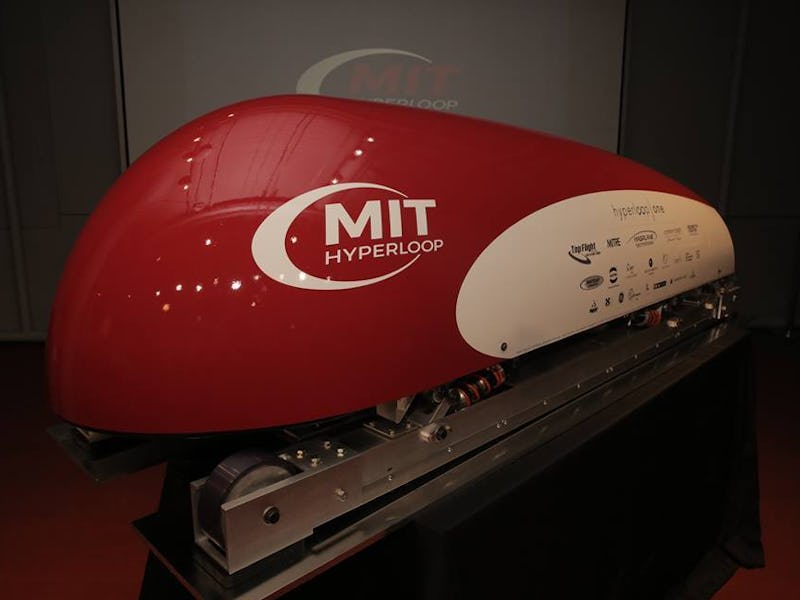MIT Hyperloop Team Unveils First Prototype Pod
Too small for humans, perfect for a prototype.

It’s been a big week for hyperloops. On Friday, a team of students from the Massachusetts Institute of Technology unveiled the first public prototype hyperloop pod. The reveal came just two days after Hyperloop One completed the first full-scale engine demonstration in Nevada.
The 30-member MIT team won the hyperloop design competition sponsored by Elon Musk and SpaceX in January. After the win, the team’s project manager John Mayo told Inverse that “the whole world is going to be watching” them, but the students would be “sure to impress.” Now they have the prototype to show for it.
The pod is too small for people — team captain Philippe Kirschen told Scientific American that the team hasn’t “thought about the complex questions of how you arrange passengers” yet. Still, it’s just a prototype, and the team wasn’t required to figure out the human problem at this stage. The pod will be tested this summer on a yet-to-be-built, 1.6-kilometer SpaceX track in Hawthorne, California.
The MIT team is one of 10 teams competing to make a human-scale hyperloop pod that can zip around at 700 mph. The competition is designed to show that the concept is possible, not to have a finished product. That’s why MIT built a prototype that can’t actually transport anything. After all, you’ve got to start with the basics.
The prototype focuses on the levitation, braking, and control aspects of a hyperloop pod. The MIT team chose to focus on those aspects rather than the actual look of the pod because the look isn’t “necessary to prove hyperloop,” Mayo told Inverse in February. The pod costed around $150,000, is a little over eight feet long and weighs 550 pounds. It is expected to top out around 230 mph, according to Scientific American.
Hyperloop One, the private hyperloop company closest to an actual product, took note of the MIT team’s progress.
Hyperloops still have their hiccups and unresolved issues — vomit, for one — but steps forward like Hyperloop One’s test run and MIT’s prototype are giving the haters reason to reconsider an anti-hyperloop position.